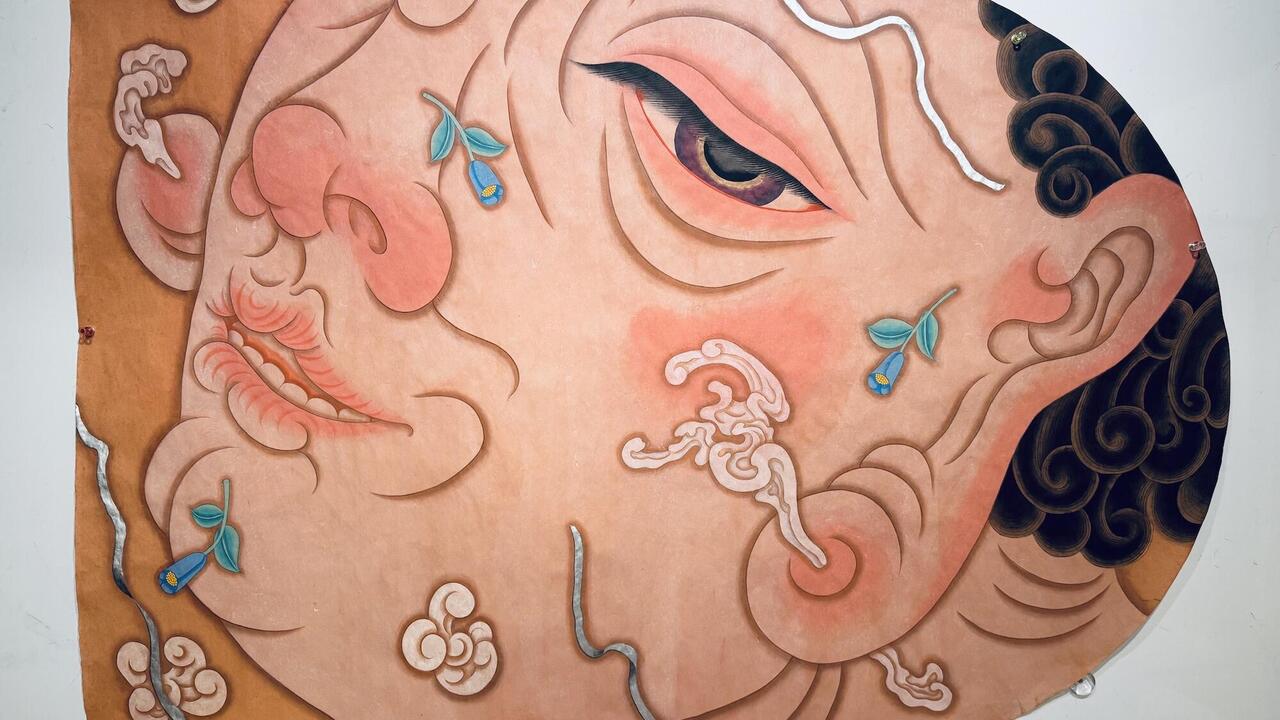Jesse Bransford
Now that we've become accustomed to living in an age of optical overload, we need more people like Jesse Bransford to sort out the relentless parade of visual information which confronts us daily. In his large ink drawings, made both directly on the wall and on paper, we find an encyclopaedic collection of images lifted from a vast number of cultural sources and periods. Yet, despite the subtle suggestion of a millennial drive to summarise our present condition, these works do not strive for wholeness.
I have a strong suspicion that Bransford was once a Dungeons and Dragons aficionado; perhaps he still plays. And it seems feasible that the game's reliance on the players' ability to sustain elaborate fantasies was instrumental in shaping Bransford's own approach to what he has described as a 'drawn clash of esoteric belief systems'. Each drawing's title contains the German word, Gestalt (meaning shape or form), which was introduced into the field of psychology roughly a century ago to describe the perception of unity: one sees an object as a whole rather than as the sum of its individual parts. However, considering the disparate nature of the images and icons Bransford manipulates, the only effective totalising element in these drawings appears to reside in their almost abstract all-overness when viewed as single pictures. It is when one steps closer and takes in the details that a sense of fragmentation becomes unavoidable.
For an artist of Bransford's generation, born in the early 70s, a lack of cohesion is taken for granted. He was raised in the era of early videogames, Heavy Metal poster art, Star Wars and the emergence of personal computers, when visual stimulation began to reach its current, frenzied pitch. In Gestalt No. 17 (History Lesson) (1998) ? drawn directly on the wall at Feature - we see familiar forms, like the characters from Donkey Kong free-floating alongside the Starship Enterprise. Yet this constellation of relatively up-to-date images is temporally complicated by the inclusion of certain mystical symbols and scenes from past epochs. Upon noticing the Eye of Providence motif, familiar from the US dollar bill, hovering at the top of a ladder connected to a Space Invaders alien, a system within Bransford's eclectic arrangement makes itself felt.
Before long though, isolated instances of provocative comparison distract from the search for comprehensiveness. In Gestalt No. 12 (The Left and Right Hands) (1998), two large, disembodied heads dominate the composition. On the left is the wide-eyed gaze of Marshall Herff Applewhite, the leader of the doomed Heaven's Gate sect. Next to him we recognise the calm, confident visage of Patrick Stewart, a.k.a. Captain Picard of Star Trek: The Next Generation ? the depiction of an actual, but seemingly otherworldly, person in close proximity to a fictional character who embodies rationality and virtuous authority. The impulse is to forget the distinction between reality and myth and concentrate instead on the kinds of leadership qualities they exhibit. One man relied on blind faith to convince his followers to join the aliens trailing the Hale-Bopp comet while the other promoted empirically motivated decision-making as the means to intergalactic survival among hostile extraterrestrials.
Is one's science necessarily more enlightened than the other's fiction?
The answer might be found in Gestalt No. 13 (Orbis Tertius) (1998) which includes an Internet address for those with similarly burning questions: www.thetruth.net. Scanning the surface of this cosmological mix we see two figures, perched atop a column-like mountain, who gesture to each other as they ponder the heavens. Taken from a 17th century series of alchemical images, the scene symbolically portrays the spirit and soul engaged in dialogue. In the context of Bransford's drawing, it is as if they are trying to establish some order amid the chaos surrounding them. Bearing in mind that the publication in which these images originally appeared was a fairly early example of a printed and distributed book, the artist presents a sort of mini-history of the post-Renaissance dissemination of information. Yet, like a modern-day alchemist whose experiments with base metals never produce gold, Bransford seems more intent on the search for knowledge than on offering any absolute answers to his visual puzzles.















